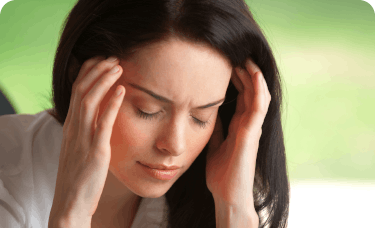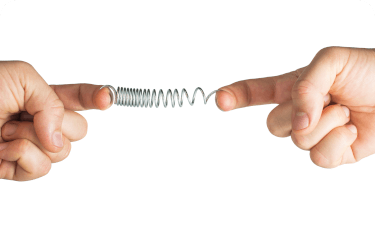After a long day at work, the last thing you want to deal with is pain in the back of your head. If you’re suffering from a headache, you’re not alone—almost everyone experiences headaches at some point.1 There are different types of headaches, but the main characteristic of a headache is a throbbing, constant, sharp or dull pain in your head or face. Pain in the back of your head can be caused by a tension or migraine headache.
Tension Headaches
One of the potential causes of the pain in the back of your head is a tension headache. Tension headaches are usually caused by everyday stressors, making them the most common type of headache. Typically, tension headaches cause a steady, dull ache that can be felt on both sides of the head.2 Symptoms that are more severe such as throbbing or pulsating pain, nausea, vomiting and sensitivity to light are often associated with migraines instead of tension headaches.3
What Causes Tension Headaches?
It’s hard to pinpoint the exact reason behind tension headaches. You might notice yourself getting a tension headache after a stressful or tense day. Other causes can include muscle contractions in the head and neck, your genetics and your environment.2 What Are the Symptoms of a Tension Headache?
The most common symptoms of a tension headache can include:2
- Pain that comes on slowly
- Pain in and around the back part of the head or neck
- Tension on both sides of the head
- Dull pain or a feeling like there’s a band or vice around the head
- Mild to moderate pain
Migraine Headaches
Migraine headaches aren’t as common as tension headaches, but the pain tends to be much more severe. While anyone can experience a migraine, they are two to three times more common in women than men. Like tension headaches, genetics can also play a part in determining who gets migraines—70 percent of migraine sufferers have one or more family members who also experience migraines.3
What Causes Migraine Headaches?
People who are prone to migraines usually have specific triggers that can set off their symptoms. Some of the most common migraine triggers include:3
- Rising humidity and heat levels
- Lack of sleep or oversleeping
- Fatigue
- Emotional upset
- Stress
- Sensory triggers including bright or flickering lights, loud noises or strong smells
- Certain foods, alcohol or excess caffeine
What Are the Symptoms of a Migraine Headache?
Migraines with aura can have up to four different stages: prodrome, aura, attack and postdrome. But you might not experience each stage.4









